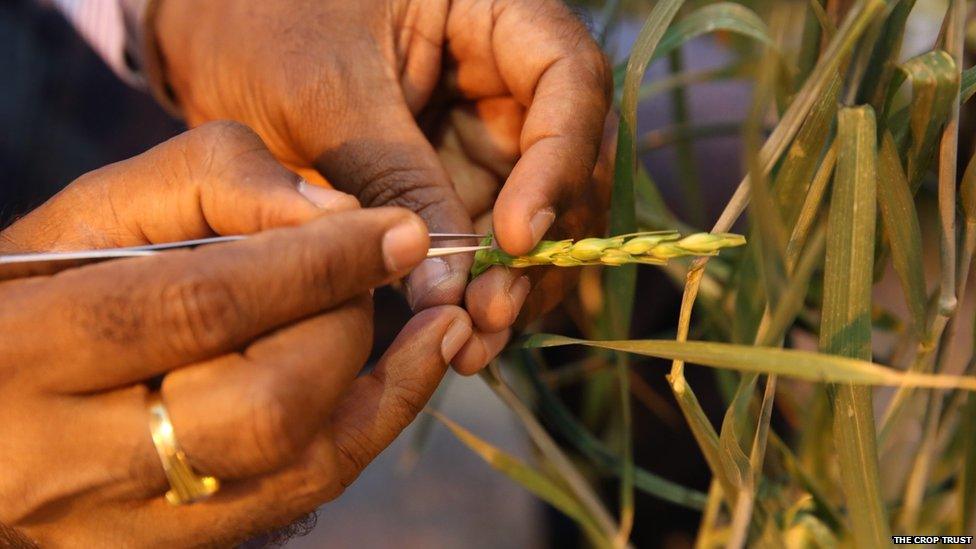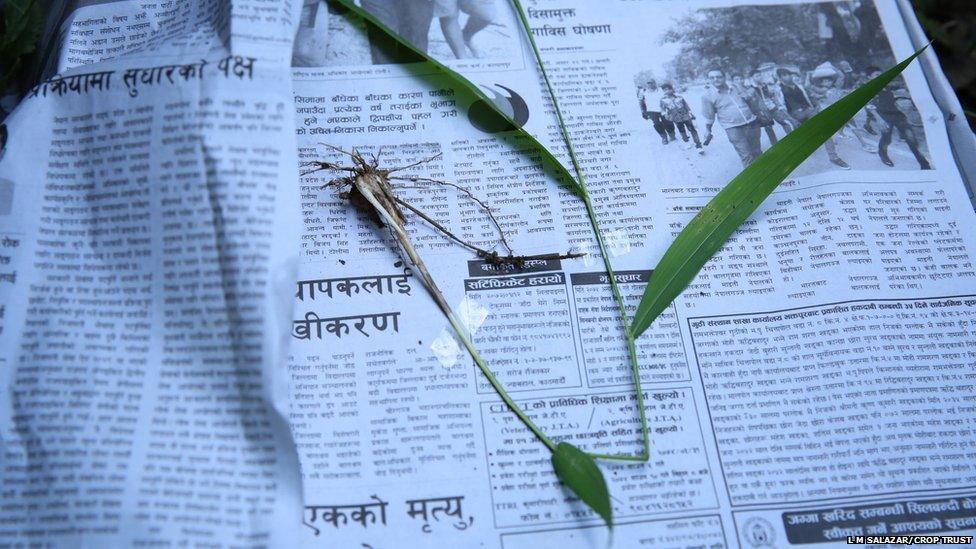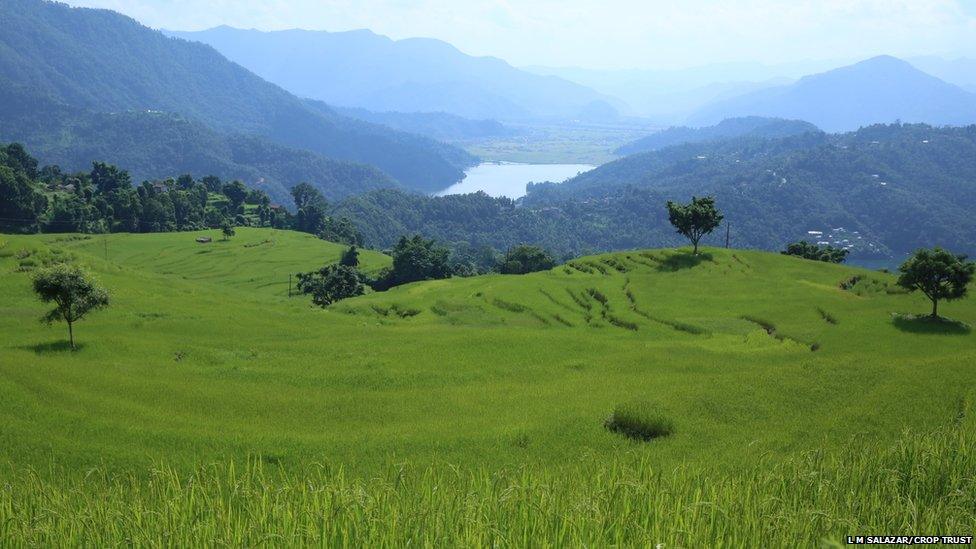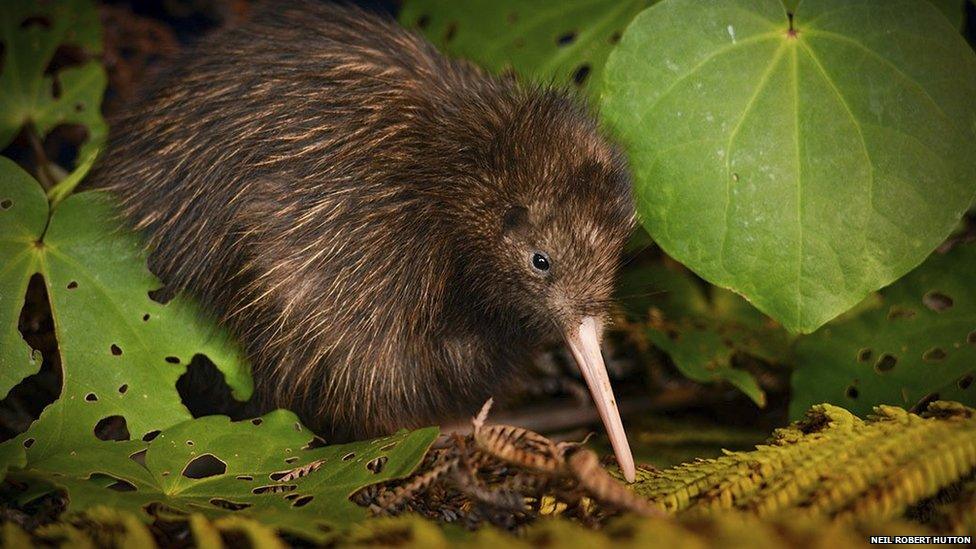IUCN Red List: Wild crops listed as threatened
- Published
- comments

Wild wheat can be bred with modern crops to boost resilience
Wild relatives of modern crops deemed crucial for food security are being pushed to the brink of extinction, according to the International Union for Conservation of Nature.
More than 20 rice, wheat and yam plants have been listed as threatened on the latest version of the IUCN's Red list.
The wild plants are being squeezed out by intensive farming, deforestation and urban sprawl, say scientists.
Modern crops can be crossbred with their wild cousins to safeguard foods.
''To lose them would be a disaster,'' said Dr Nigel Maxted of the University of Birmingham, who is co-chair of the IUCN's specialist group on crop wild relatives.
''It would be much more difficult to maintain food security without them.''
Insurance policy
Commercial crops have lost genetic diversity. They are vulnerable to the effects of climate change, which may bring drought, diseases and new pests.
Work is under way to breed new varieties of grains, cereals and vegetables by crossing them with tough, wild species that can grow in a range of habitats, such as mountains, deserts or salt marshes.

Researchers are collecting wild relatives of crops in Nepal
These efforts rely on protecting plants related to modern food crops at the sites where they grow in the wild as well as preserving their seeds in gene banks.
The first systematic assessment of wild wheat, rice and yam has led to the listing of three types of rice, two types of wheat (used to make bread) and 17 types of yam.
Marie Haga is Executive Director of The Crop Trust, an international organisation that is working to safeguard crop diversity.
She welcomed the inclusion of wild crops on the Red List.
''The IUCN has high legitimacy among decision makers and the general population, so it's extremely interesting that they are putting these wild relatives on their Red List,'' she told BBC News.
''I hope that will contribute to raising the awareness even further that we've got to take action, and we've got to take action now.''
Wild relatives of crops act as ''an insurance policy for the world'', she added.

Rice grows wild in Nepal
Most of the wild rice crops that are threatened with extinction grow in South East Asia, while a few are found in Africa. The wild wheat plants that are of concern are found mainly in the Near and Middle East, including war-torn areas that are off-limits to conservationists.
Yams feed around 100 million people in Africa alone. Paul Wilkin of the Royal Botanic Gardens, Kew, said conservation work is being undertaken to make sure that wild yam plants are available to provide food and medicines worldwide, now and in the future.
''They will also be sources of key traits to breed improved, future-proof crop varieties,'' he said.
''These assessments enable the most threatened species of yams and other crop wild relatives to be prioritised effectively for conservation actions.''
The economic value of crop wild relatives is put at US$115bn per year to the global economy.
Other Red List entries
In addition to wild crops, the IUCN highlighted other flora and fauna that have been added to the latest update of the Red List:
Entanglement with fishing nets and overfishing have caused steep declines in the Irrawaddy dolphin and finless porpoise, with both species moving from Vulnerable to Endangered
Three reptiles found only on Australia's Christmas Island have been declared extinct in the wild
Australia's western ringtail possum is in dramatic decline due to the increasingly hot and dry climate in Western Australia and predation from red foxes and feral cats
A third of snakes and lizards native to Japan are listed as Threatened, due to habitat loss, collection for the pet trade and the introduction of predators such as the Japanese weasel.

The Northern brown kiwi: numbers are rising
But there is a success story; kiwis in New Zealand are recovering thanks to conservation efforts.
An effort to wipe out predators such as stoats and ferrets, as well as raising chicks in captivity to release in the wild, has boosted the number of two species of New Zealand's native bird.
Follow Helen on Twitter, external.